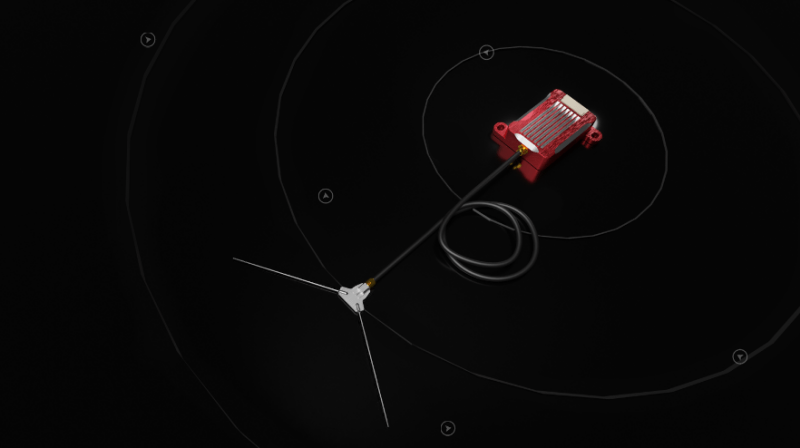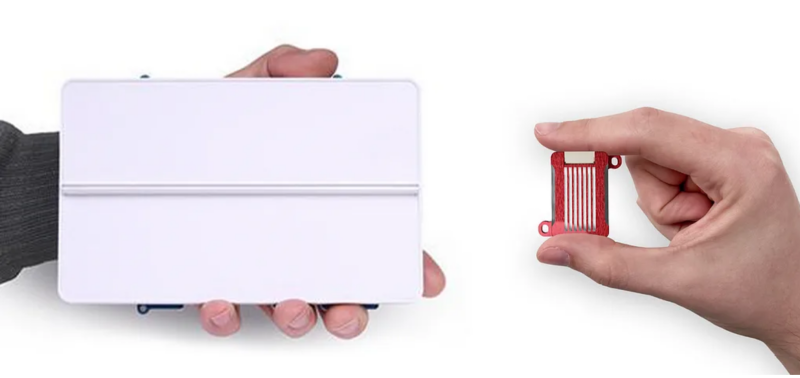uAvionix announced the release of pingRX Pro, a new Detect and Avoid (DAA) ADS-B Receiver for professional Unmanned Aircraft Systems (UAS). pingRX Pro detects private and commercial aircraft operating on 978 MHz and 1090 MHz. The received aircraft identity, position, and altitude are visualized on a moving map in real-time allowing the UAS operator or autopilot to remain well clear.
The new pingRX Pro continues uAvionix’s lineage of easy to integrate receivers with direct support for popular Ardupilot-based autopilot systems. By adding the protection of an aircraft-grade aluminum case and detachable remote mount antenna, pingRX Pro is the ideal ADS-B receiver for professional UAS operators who need performance, quality and flexibility for limitless UAS applications.
“uAvionix has led the way in ADS-B solutions for unmanned aircraft since our founding.” said Christian Ramsey, president uAvionix Corporation. “Industry leaders and BVLOS operators continually choose ADS-B receivers as their primary DAA solution. pingRX Pro now offers manufacturers and integrators the installation flexibility they need for their enterprise aircraft. “
Intelligence Meets Elegance
Weighing less than 8 grams, pingRX Pro features uAvionix ping ADS-B, proven in over a half-million ADS-B solutions worldwide, from UAS to airport vehicles to certified General Aviation solutions. pingRX Pro offers an external antenna allowing operators to install the pingRX Pro anywhere on the airframe. UAS are often designed from materials that can block radio frequencies and impair radio performance. By providing an external remote mounted antenna, performance can be maximized while providing critical protection of the receiver mounted inside the fuselage.
ADS-B Compared to Alternative Detect & Avoid Systems
As the industry struggles to implement and prove the performance of radar, camera, and aural DAA solutions, ADS-B stands out as the lowest-cost, lowest SWaP, and highest performance 360° Field of View DAA sensor on the market. ADS-B uses precision GPS information to broadcast the position of an aircraft in real-time. Quite simply, the technology allows aircraft to share the skies more efficiently by telling each other where they are. With ADS-B already widely adopted by manned aircraft, the task of DAA is eased because the manned aircraft are simply broadcasting their position directly to you with no intermediary. While there are many aircraft not yet equipped with ADS-B OUT, nearly all large commercial operators are equipped. The United States requires ADS-B OUT on all manned aircraft with an engine-driven electrical system operating near medium and large cities from the surface to 4,000’ above ground. Given the likelihood of ADS-B OUT on manned aircraft, and the density in these prime areas for inspection and package delivery, pingRX Pro ADS-B IN is a no-brainer baseline technology to aid you in your requirement to remain Well Clear of surrounding aircraft.
Outperforming every other DAA type, pingRX Pro tracks 100 simultaneous aircraft at ranges exceeding 150 miles, all at nearly 200% less power consumption of the alternatives.
Source: Press Release



This article and technology comparison is completely misleading. The author is comparing an ADS-B receiver with a RADAR, camera, and aural sensor however their function and use in DAA is totally different. ADS-B receivers such as this and others can only detect aircraft that have ADS-B transponders on board (NOT MANDATORY + expensive). To assume cooperation is foolish, this is like asking every driver on the road to install electronics in their car so that self-driving vehicles can work on the roads.
The majority of low flying aircraft that drones threaten in the airspace do not have ADS-B on board and will not be detected by this product (think GA aircraft, bush planes, ultralights, gliders, parachutists, balloons, crop-dusters, etc etc). ADS-B will never be the answer to DAA, according to the FAA and other governments DAA technology that detects non-cooperative aircraft IS MANDATORY, and can only be achieved with sensors such as cameras and RADAR.